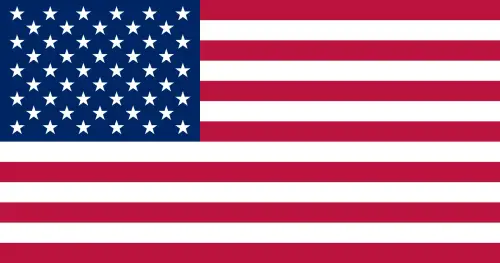The significance of Maha Shivaratri falling during the Mahakumbh Mela is deeply rooted in Hindu mythology and spiritual practices. To understand the gravity of this union, we must delve into the stories and beliefs associated with both events.
Maha Shivaratri: The Night of Lord Shiva
Maha Shivaratri, often referred to as the “Great Night of Shiva,” is one of the most sacred occasions for Hindus. It falls on the 14th night of the dark fortnight of the month of Phalguna (February-March), a night when Lord Shiva is believed to have performed his cosmic dance of creation, preservation, and destruction.
There are various legends and stories behind the significance of Maha Shivaratri, but one of the most widely known ones is:
The Legend of Lord Shiva and the Serpent
According to Hindu mythology, during the Churning of the Ocean (Samudra Manthan), the gods and demons worked together to churn the ocean in search of the amrita (nectar of immortality). In this process, various precious objects emerged, one of which was the venomous poison (halahala). The poison was so deadly that it threatened to destroy the universe.
To save the world, Lord Shiva, in his compassion, drank the poison. However, as he swallowed it, the poison began to burn his throat, and his throat turned blue, earning him the name Neelkanth (the blue-throated one).
To cool his throat and mitigate the effects of the poison, the serpent king Vasuki coiled around Lord Shiva’s neck. This act of Shiva swallowing the poison is believed to have taken place on the night of Maha Shivaratri. Devotees believe that on this night, by chanting mantras, meditating, and offering prayers to Lord Shiva, they can receive his divine blessings for protection, peace, and spiritual strength.
Significance of the Mahakumbh Mela
The Mahakumbh Mela is a grand religious gathering that takes place once every 12 years, and it rotates between four locations in India: Prayagraj (Allahabad), Haridwar, Ujjain, and Nashik. According to Hindu tradition, the Kumbh Mela marks the spot where the nectar of immortality (amrita) was spilled during the Samudra Manthan. The story goes that when the gods and demons churned the ocean, the amrita was spilled at these four locations, and it is believed that taking a holy dip in these rivers during the Kumbh Mela cleanses sins and grants liberation (moksha).
The Spiritual Convergence of Maha Shivaratri and Mahakumbh
The rare occurrence of Maha Shivaratri coinciding with the Mahakumbh Mela is considered to be a time of immense spiritual potency. According to mythological beliefs, the Mahakumbh Mela represents the cosmic gathering of divine energy at the place where the nectar of immortality was spilled, and it is said that during this event, the divine forces are heightened.
When Maha Shivaratri falls during the Mahakumbh, it is considered the most auspicious moment for spiritual awakening and realization. The Shiva aspect of the divine is believed to be especially active, and the holy waters of the rivers are thought to be infused with divine energy, ready to purify and cleanse the devotees.
A powerful story associated with the Mahakumbh Mela tells of the moment when the gods and demons were fighting over the Kumbh, which contained the amrita. The conflict is said to have caused the spilling of the nectar at these four locations, marking them as sacred spots of spiritual significance.
The belief is that the combined power of Maha Shivaratri (which is dedicated to Lord Shiva’s cosmic role in creation, preservation, and destruction) and the divine energy present during the Mahakumbh makes this period especially sacred. Devotees believe that participating in the Mahakumbh Mela during Maha Shivaratri offers the opportunity for spiritual liberation (moksha), healing, and divine protection. It is said that the time spent in meditation, prayer, and holy bathing during this period leads to a deep connection with the divine.
Rituals During the Maha Shivaratri at the Mahakumbh Mela
During the Mahakumbh Mela, on the night of Maha Shivaratri, the atmosphere is charged with divine energy. Pilgrims observe various rituals:
- Fasting and Vigil (Nirjala Vrat): Devotees keep a fast on this day and stay awake through the night. It is believed that this brings blessings from Lord Shiva and purifies the mind and body.
- Holy Bath: Pilgrims take a sacred dip in the holy rivers (like the Ganga, Yamuna, and Saraswati) to cleanse themselves of sins and gain divine merit.
- Chanting and Prayers: Devotees chant mantras, especially the powerful “Om Namah Shivaya”, throughout the night. This is believed to invoke the blessings of Lord Shiva and to awaken spiritual consciousness.
- Offering of Bilva Leaves: Devotees offer Bilva leaves to Lord Shiva’s idol as they are considered sacred and are believed to please Lord Shiva.
- Meditation: Many people meditate during the night, focusing on Lord Shiva’s form and teachings, aiming for spiritual elevation.
The Cosmic Alignment: A Divine Opportunity
The alignment of Maha Shivaratri and the Mahakumbh Mela is seen as a rare opportunity where the cosmic forces are aligned for spiritual progress. It is said that the entire universe is aligned in a way that the vibrations of Lord Shiva’s cosmic dance are most powerful during this period. Devotees consider themselves fortunate if they can be present at the Mahakumbh Mela during Maha Shivaratri, as the blessings are considered manifold.








